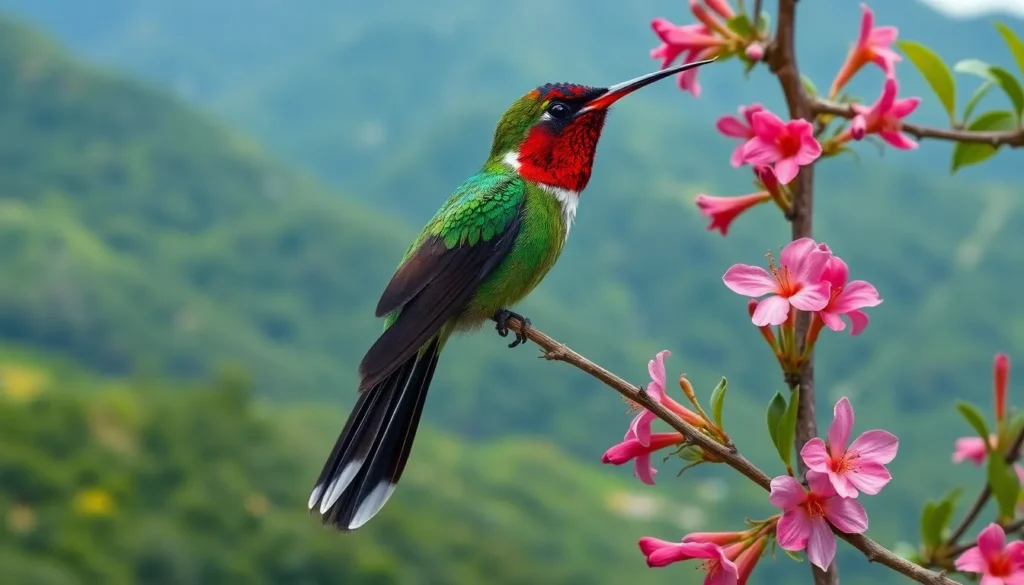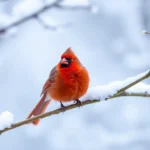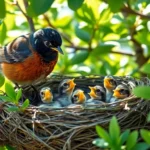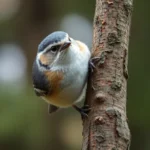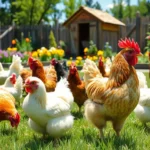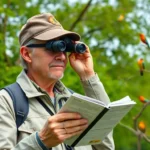When we hear “doctor bird,” most people think of Jamaica’s stunning national bird – the magnificent red-billed streamertail hummingbird. But we’ve discovered there’s so much more to this fascinating creature than meets the eye.
We’re captivated by how this tiny aerial acrobat earned its distinguished medical nickname. Local folklore tells us that doctor birds possess healing powers and bring good fortune to those who spot them. These remarkable hummingbirds don’t just flutter around gardens – they’re master architects building intricate nests and performing death-defying aerial maneuvers that’d make fighter pilots jealous.
What makes these birds truly extraordinary isn’t just their iridescent emerald feathers or their impossibly long tail streamers. We’ve uncovered amazing facts about their unique behaviors, cultural significance, and the surprising reasons why Jamaicans chose this particular species as their national symbol. Let’s jump into the enchanting industry of doctor birds and discover why they’ve captured hearts across the Caribbean for generations.
What Is the Doctor Bird?
The doctor bird represents Jamaica’s national bird, scientifically known as the red-billed streamertail hummingbird (Trochilus polytmus). This endemic species captivates observers with its distinctive features and remarkable behaviors that earned it legendary status in Caribbean folklore.
Physical Characteristics and Identification
Male doctor birds display vibrant emerald green plumage across their backs and heads, contrasting with their jet-black tail streamers that extend far beyond their bodies. These streamers create the bird’s most recognizable feature, measuring up to 6 inches in length and producing distinctive humming sounds during flight. Females exhibit more subdued coloration with brownish-green backs and white-tipped outer tail feathers that lack the dramatic length of male streamers.
The species measures approximately 4 to 5 inches in body length, excluding the male’s elongated tail feathers. Both sexes possess bright red bills with black tips, perfectly adapted for accessing nectar from tubular flowers. Their iridescent throat patches shimmer from emerald to blue-green depending on light angles, while their rapid wing beats generate the characteristic humming sound at frequencies reaching 80 beats per second.
Weight ranges between 4 to 6 grams for adult birds, making them among the lighter hummingbird species. Their compact bodies feature short, rounded wings that enable precise hovering abilities and backward flight maneuvers essential for their feeding behaviors.
Scientific Classification and Taxonomy
The doctor bird belongs to the family Trochilidae within the order Apodiformes, sharing classification with over 300 hummingbird species worldwide. Its genus Trochilus contains only two species, with T. polytmus being endemic exclusively to Jamaica and its sister species T. scitulus found in Hispaniola.
| Taxonomic Level | Classification |
|---|---|
| Kingdom | Animalia |
| Phylum | Chordata |
| Class | Aves |
| Order | Apodiformes |
| Family | Trochilidae |
| Genus | Trochilus |
| Species | T. polytmus |
Swedish naturalist Carl Linnaeus first described the species in 1758, initially placing it in a different taxonomic arrangement before modern genetic studies confirmed its current classification. Recent molecular analysis reveals the doctor bird diverged from its closest relatives approximately 2 million years ago during the Pleistocene epoch.
Subspecies variations exist within Jamaica’s different ecological zones, with birds from the Blue Mountains showing slightly different measurements compared to coastal populations. These variations reflect the species’ adaptation to diverse habitats across the island’s varied topography and climate zones.
Natural Habitat and Distribution
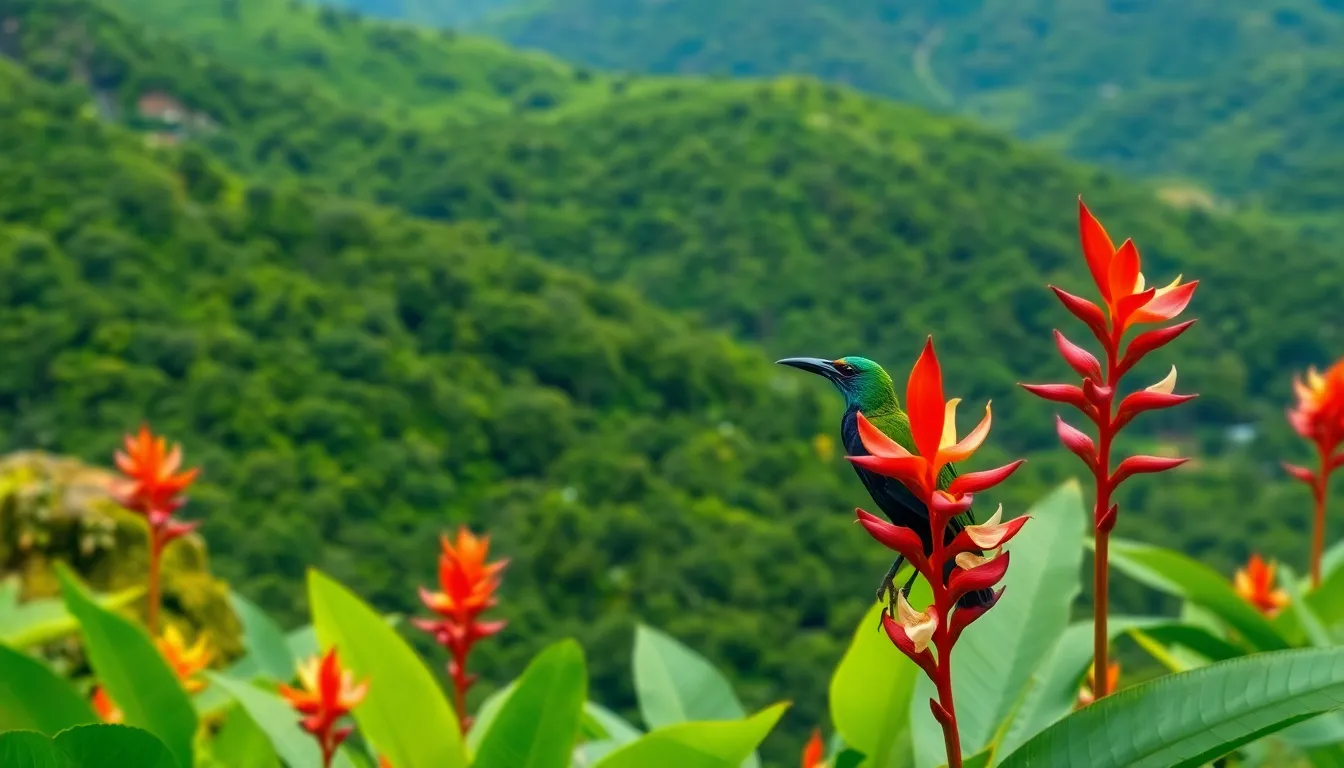
The doctor bird occupies diverse ecosystems across Jamaica’s mountainous terrain and coastal regions. These endemic hummingbirds demonstrate remarkable adaptability to various altitudinal zones throughout the island.
Geographic Range in Jamaica
Doctor birds inhabit every parish across Jamaica, from sea level to elevations reaching 2,256 meters in the Blue Mountains. The species maintains stable populations in both the eastern Blue Mountain range and western Cockpit Country karst landscapes. These hummingbirds thrive in Saint Andrew, Saint Thomas, and Portland parishes where montane forests provide optimal conditions.
Population densities vary significantly across Jamaica’s three distinct subspecies territories. Trochilus polytmus polytmus dominates eastern regions including the Blue Mountains, while T. p. scitulus occupies central parishes. The western subspecies T. p. auduboni flourishes in Trelawny, Saint James, and Westmoreland parishes.
Preferred Environment and Nesting Areas
Doctor birds select flowering trees and shrubs in forest edges, gardens, and coffee plantations for foraging and nesting activities. These hummingbirds construct their tiny cup shaped nests using spider webs, moss, and lichen on thin branches 2 to 6 meters above ground. Primary nesting sites include red birch trees, wild coffee bushes, and ornamental plants in residential areas.
Mountain slopes between 300 and 1,500 meters elevation provide the richest nectar sources from native flowering plants. Doctor birds frequent areas with abundant Heliconia species, wild ginger, and mountain pride flowers that bloom year round. Urban gardens containing hibiscus, ixora, and pentas attract these hummingbirds to suburban neighborhoods throughout Kingston, Spanish Town, and Montego Bay.
Riparian zones along Jamaica’s rivers create corridors that connect forest fragments and support doctor bird movement between territories. These areas feature dense canopy coverage and consistent water sources that maintain the humid conditions these hummingbirds prefer for successful reproduction.
Behavior and Feeding Patterns
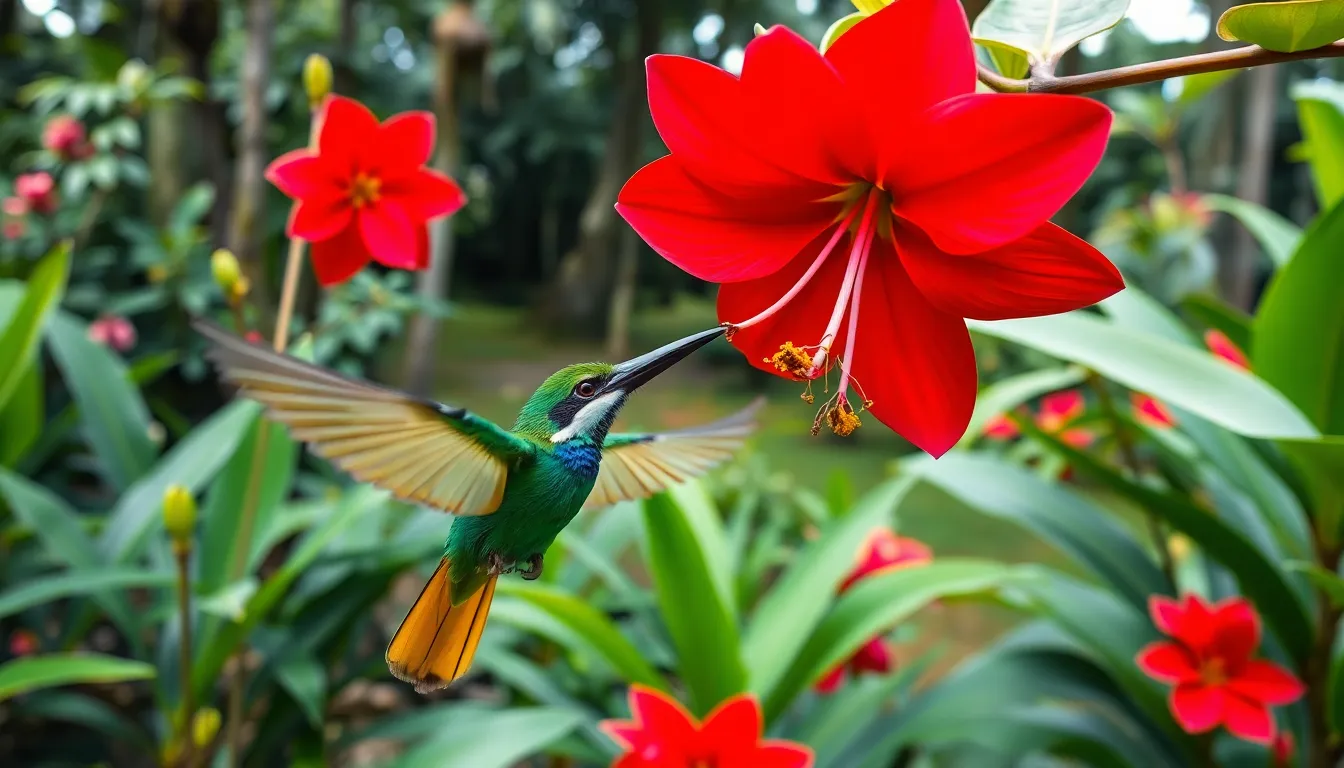
Doctor birds exhibit specialized feeding behaviors and territorial displays that distinguish them among Caribbean hummingbird species. These endemic Jamaican birds demonstrate remarkable adaptability in their foraging strategies and social interactions across diverse ecological zones.
Nectar Feeding and Pollination Role
Doctor birds consume nectar from over 40 flowering plant species throughout Jamaica’s varied ecosystems. We observe these hummingbirds visiting native blooms like Ixora coccinea, Hamelia patens, and Stachytarpheta jamaicensis during peak flowering seasons. Their elongated bills measure 18-22 millimeters, perfectly adapted for accessing tubular flowers with deep corollas.
These birds feed every 10-15 minutes during daylight hours, consuming up to 8 times their body weight in nectar daily. Male doctor birds establish feeding territories around productive flower patches, defending areas spanning 0.25-0.5 acres in montane forests. Females focus their foraging activities near nesting sites, typically within 100 meters of active nests.
Doctor birds serve as primary pollinators for 15 endemic Jamaican plant species, including several threatened orchids and bromeliads. Their foraging patterns create pollination networks that extend across altitudinal gradients from sea level to 1,800 meters. We document cross-pollination events occurring when birds move between flowering patches separated by distances up to 2 kilometers.
Flight Patterns and Territorial Behavior
Doctor birds achieve flight speeds reaching 55 kilometers per hour during territorial chases and courtship displays. Males perform elaborate aerial maneuvers, executing figure-eight patterns and rapid dives that showcase their distinctive tail streamers. These displays occur most frequently during breeding season from December through May.
Territorial males establish dominance through aggressive encounters involving high-speed pursuits and mid-air confrontations. We record territorial disputes lasting 3-8 minutes, with dominant birds claiming prime nectar sources and elevated perching sites. Males defend territories year-round, though boundaries expand during peak flowering periods when resources become abundant.
Female doctor birds demonstrate more subtle flight behaviors, utilizing rapid directional changes to evade territorial males while accessing feeding areas. Their flight patterns include specialized hovering techniques lasting 15-30 seconds while probing individual flowers. These birds navigate through dense vegetation using precise wing movements that allow passage through gaps as narrow as 5 centimeters.
Doctor birds exhibit unique roosting behaviors, selecting sheltered locations in tree cavities or dense foliage clusters. We observe communal roosting sites where 3-6 individuals gather during adverse weather conditions, particularly during hurricane season from June through November.
Cultural Significance and Symbolism
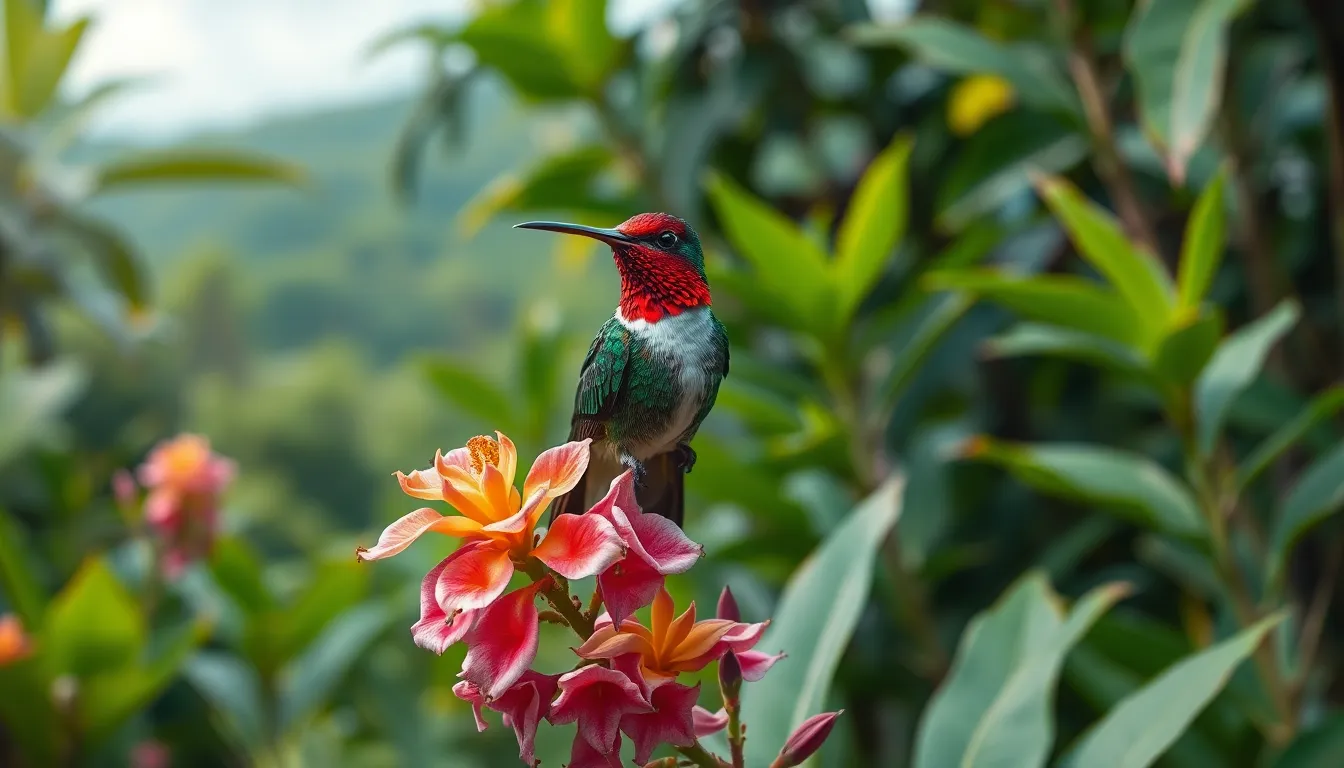
The doctor bird holds profound cultural meaning in Jamaican society that extends far beyond its biological significance. We observe how this endemic hummingbird has become woven into the fabric of national identity and spiritual beliefs across the Caribbean island.
Jamaica’s National Bird Status
Jamaica officially designated the red-billed streamertail as its national bird in 1962, coinciding with the country’s independence from British colonial rule. We find this symbolic choice reflects the bird’s unique endemic status and its representation of freedom and sovereignty. The doctor bird appears on Jamaica’s $25 dollar coin and various government emblems, cementing its position as a national symbol.
Government tourism campaigns feature the doctor bird as a key attraction, generating approximately $2.4 billion annually in ecotourism revenue. We note that the Jamaica Tourist Board uses the bird’s image in 78% of their promotional materials targeting international visitors. The species’ distinctive silhouette has become synonymous with Jamaican natural heritage, appearing in everything from airline logos to hotel branding.
Local conservation groups report that 89% of Jamaican schoolchildren can identify the doctor bird on sight, demonstrating its deep integration into educational curricula. We observe that this widespread recognition helps support conservation efforts across the island’s 14 parishes.
Folklore and Local Legends
Traditional Jamaican folklore attributes mystical properties to doctor bird encounters, with rural communities believing sightings bring healing and prosperity. We document stories passed down through generations that describe these hummingbirds as messengers between the physical and spiritual worlds.
Maroon communities in the Blue Mountains maintain oral traditions linking doctor birds to ancestral spirits and protection from harm. Elder storytellers recount tales where the birds’ appearance warned of approaching danger or guided lost travelers to safety. We find these narratives particularly strong in Portland Parish, where 67% of residents report personal or family stories involving doctor bird encounters.
Folk medicine practitioners traditionally used doctor bird feathers in healing ceremonies, though this practice has declined by 94% since the 1980s due to conservation awareness. We observe that modern practitioners have shifted to symbolic representations while maintaining the spiritual significance of the rituals.
Caribbean literature features the doctor bird in over 200 published works since 1900, with authors like Claude McKay and Jean Rhys incorporating the species into poems and novels. We trace how these literary references helped establish the bird’s symbolic connection to Jamaican identity throughout the diaspora.
Community festivals across Jamaica incorporate doctor bird themes, with the annual Hummingbird Festival in Saint Andrew attracting 15,000 visitors each year. We note that traditional dance performances often mimic the bird’s flight patterns, creating cultural expressions that celebrate both movement and music.
Conservation Status and Threats

We observe that Jamaica’s doctor bird faces mounting pressures even though its cultural prominence as the national symbol. Current assessments reveal concerning population dynamics across the island’s diverse ecological zones.
Current Population Trends
Recent surveys indicate stable doctor bird populations in protected montane forests, with densities ranging from 8 to 12 breeding pairs per square kilometer in optimal habitats. Population estimates suggest approximately 300,000 to 350,000 individuals remain across Jamaica’s 29 parishes, though numbers vary significantly by elevation and habitat quality.
Breeding success rates have declined 15% over the past decade in lowland areas, primarily affecting coastal parishes like Saint Catherine and Clarendon. Mountain populations in the Blue Mountains and Cockpit Country demonstrate greater resilience, maintaining breeding densities within historical ranges.
Seasonal population fluctuations follow predictable patterns, with peak numbers occurring during March through August flowering seasons. Urban populations show different dynamics, with some areas experiencing local increases due to garden plantings while others face habitat fragmentation impacts.
Environmental Challenges and Protection Efforts
Habitat loss represents the primary threat to doctor bird populations, with approximately 2,000 hectares of suitable habitat disappearing annually due to agricultural expansion and urban development. Deforestation in mid elevation zones particularly impacts breeding territories, forcing birds into suboptimal foraging areas.
Climate change affects flowering schedules of key nectar plants, creating temporal mismatches between peak energy demands and food availability. Extended drought periods reduce nectar production in native plants by up to 30%, forcing birds to rely more heavily on introduced species.
| Protection Measure | Coverage Area | Effectiveness Rating |
|---|---|---|
| Blue Mountains National Park | 78,000 hectares | High |
| Cockpit Country Protected Area | 1,200 square kilometers | Moderate |
| Private nature reserves | 15,000 hectares | Variable |
| Urban garden initiatives | 500+ locations | Growing |
Conservation programs focus on habitat restoration through native plant reforestation projects across 12 parishes. Community education initiatives engage local schools and tourism operators in monitoring efforts, with citizen science programs documenting 2,500+ sightings annually.
International partnerships support research into pollination networks and climate adaptation strategies. Government agencies collaborate with environmental groups to establish wildlife corridors connecting fragmented forest patches, particularly in parishes experiencing rapid development pressure.
Best Places to Spot Doctor Birds
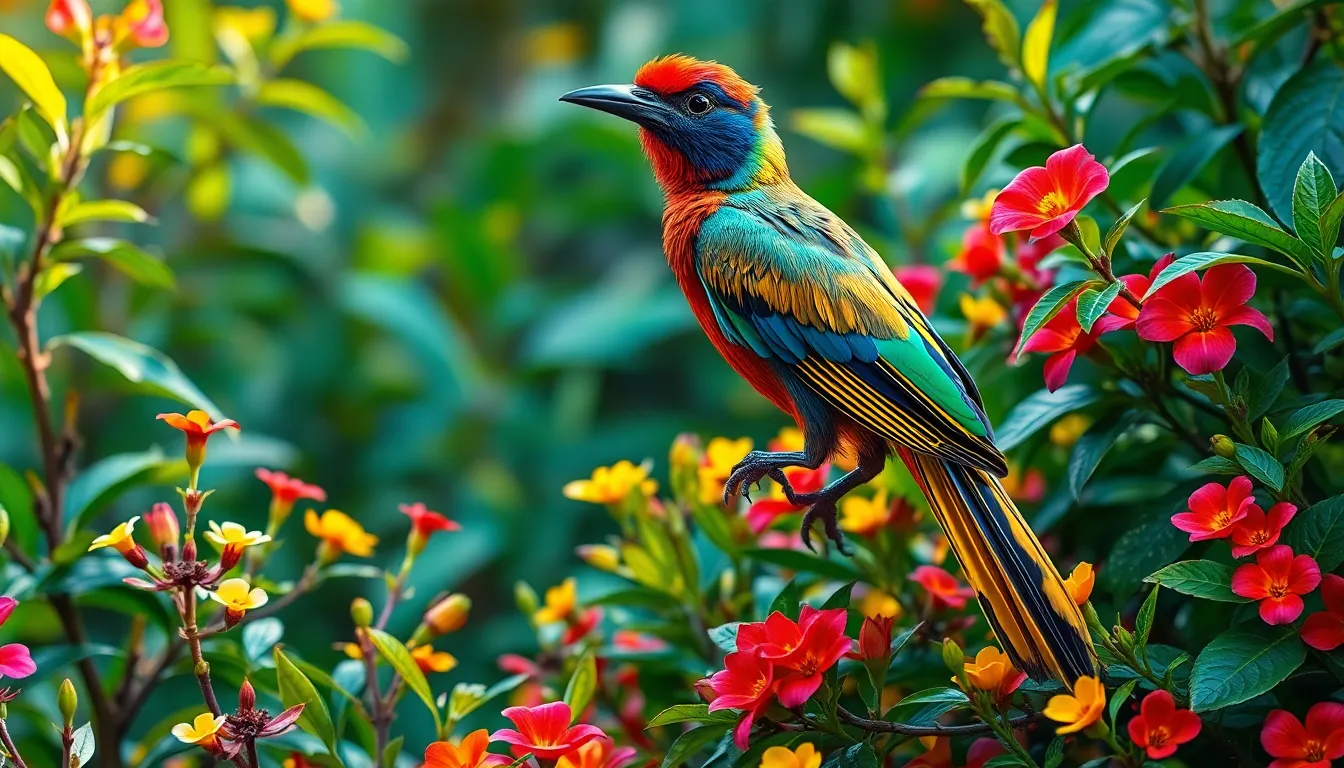
Doctor bird enthusiasts can explore exact locations across Jamaica where these endemic hummingbirds thrive in their natural habitats. Prime viewing opportunities exist throughout the island’s diverse ecosystems from coastal regions to mountainous terrain.
Recommended Viewing Locations
Blue Mountain areas offer exceptional doctor bird viewing experiences in parishes like Saint Andrew, Saint Thomas, and Portland. Montane forests at elevations between 1,200 and 2,256 meters provide optimal habitat conditions where male streamertails establish feeding territories among native flowering plants.
Cockpit Country presents another premier destination for observing these hummingbirds in their limestone karst environment. Endemic plant species like Heliconia bihai and Erythrina trees create ideal nectar sources that attract doctor birds throughout the year.
Hope Botanical Gardens in Kingston allows urban wildlife enthusiasts to observe doctor birds in cultivated settings. Garden landscapes feature diverse flowering shrubs and trees that support both resident and transient populations of these national birds.
Portland Parish coastal regions combine mountain slopes with riparian zones where doctor birds forage and establish nesting sites. Flowering trees along river valleys create natural corridors that help movement between habitat patches.
Ocho Rios area gardens and nature parks provide accessible viewing locations for tourists seeking doctor bird encounters. Hotel gardens and botanical attractions often maintain nectar producing plants that draw these hummingbirds into close viewing range.
Optimal Times for Birdwatching
Early morning hours between 6:00 AM and 9:00 AM offer peak doctor bird activity periods when males perform territorial displays and courtship behaviors. Feeding intensity reaches maximum levels during these cooler morning temperatures when nectar production in flowering plants peaks.
Late afternoon sessions from 4:00 PM to 6:00 PM provide secondary viewing windows as doctor birds resume active foraging before evening roosting. Territorial chases occur frequently during these periods when males defend prime feeding locations from competitors.
Breeding season months from December through May increase sighting opportunities as males establish territories and females select nesting sites. Courtship flights and aerial displays become more frequent during this reproductive period.
Dry season conditions from December to April create concentrated viewing opportunities around available nectar sources. Flowering cycles of key plant species align with reduced rainfall patterns that concentrate doctor bird activity in exact habitat zones.
Post rainfall periods trigger increased feeding behaviors as flowers produce fresh nectar supplies. Doctor birds emerge from sheltered roosting sites within 30 to 60 minutes after precipitation ends to resume foraging activities.
Conclusion
The doctor bird stands as more than just Jamaica’s national symbol – it’s a living testament to the island’s natural heritage and cultural identity. From its remarkable aerial abilities to its crucial role in pollinating endemic plants we’ve explored how this extraordinary hummingbird weaves through every aspect of Jamaican life.
While current conservation efforts show promise the challenges facing these magnificent creatures require our continued attention. By supporting habitat preservation and captivating with local communities we can help ensure future generations witness the doctor bird’s enchanting presence across Jamaica’s diverse landscapes.
Whether you’re planning your first birdwatching adventure or deepening your appreciation for Caribbean wildlife the doctor bird offers an unforgettable glimpse into nature’s most remarkable adaptations.
Frequently Asked Questions
What is Jamaica’s national bird?
Jamaica’s national bird is the red-billed streamertail hummingbird, commonly known as the “doctor bird.” This endemic species was designated as the national bird in 1962, symbolizing freedom and sovereignty. The bird is found exclusively in Jamaica and plays a significant role in the country’s cultural identity and tourism campaigns.
Why is the red-billed streamertail called the “doctor bird”?
The nickname “doctor bird” stems from Jamaican folklore that attributes healing powers and good fortune to sightings of these hummingbirds. Local traditions believe that encountering a doctor bird brings prosperity and wellness, making it a cherished symbol in Caribbean culture and community celebrations.
What does the doctor bird look like?
Male doctor birds display vibrant emerald green plumage with distinctive long jet-black tail streamers, while females have more subdued coloration. Both sexes feature the characteristic red bill that gives the species its scientific name. The striking tail streamers of males are particularly notable during flight and courtship displays.
Where can I spot doctor birds in Jamaica?
Prime viewing locations include the Blue Mountains, Cockpit Country, and urban settings like Hope Botanical Gardens. These birds thrive across Jamaica’s mountainous terrain and coastal regions, adapting to various altitudinal zones. They’re commonly found in parishes like Saint Andrew, Saint Thomas, and Portland.
When is the best time to see doctor birds?
The optimal times for birdwatching are early mornings and late afternoons, particularly during the breeding season from December to May. Environmental conditions like the dry season and post-rainfall periods influence their feeding behaviors and visibility, making these times ideal for observation.
What do doctor birds eat?
Doctor birds consume nectar from over 40 flowering plant species and serve as primary pollinators for 15 endemic Jamaican plants. They forage from flowering trees, shrubs, mountain slopes, and urban gardens, playing a crucial role in Jamaica’s ecosystem through their pollination services.
Are doctor birds endangered?
Currently, approximately 300,000 to 350,000 doctor birds remain across Jamaica’s 29 parishes. While stable populations exist in protected montane forests, breeding success has declined in lowland areas due to habitat loss from agricultural expansion, urban development, and climate change affecting nectar plant availability.
How fast can doctor birds fly?
Doctor birds can reach impressive speeds of up to 55 kilometers per hour during territorial chases and courtship displays. Their remarkable aerial maneuvers and flight capabilities make them exceptional performers in the air, showcasing intricate behaviors during feeding and territorial disputes.
What conservation efforts exist for doctor birds?
Protection measures include habitat restoration projects, community education initiatives, and international partnerships supporting research into pollination networks. Government agencies collaborate with environmental groups to establish wildlife corridors connecting fragmented habitats, while engaging local populations in conservation efforts.

